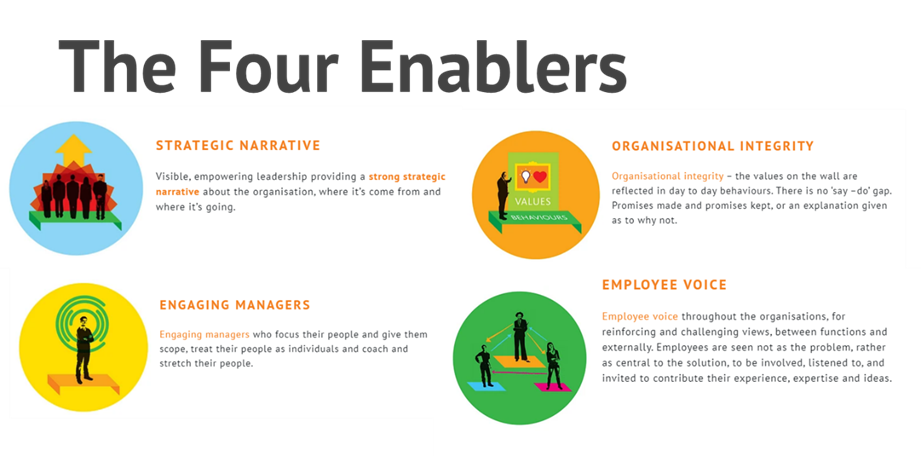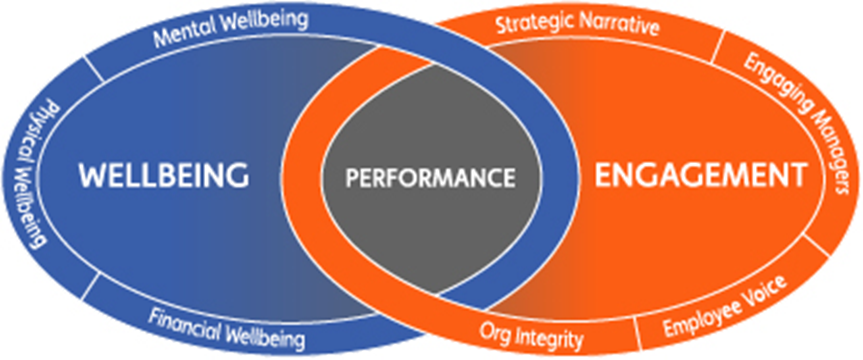When it comes to questions like this, we think there’s no point re-inventing the wheel.
That’s why one of our ‘go to’ books is ‘Build it. The Rebel Playbook for World-Class Employee Engagement’ by Glenn Elliott and Debra Corey, which includes their model The Engagement BridgeTM
Elliott and Corey define someone as engaged when they:
1. Understand and believe in the direction the organisation is going – its purpose, mission and objectives – so they feel part of something bigger than themselves
2. Understand how their role affects and contributes to the organisation’s purpose, mission and objectives
3. Genuinely want the organisation to succeed and feel shared success with the organisation. They will often put the organisation’s needs ahead of their own
Engaged employees build better, stronger and more resilient organisations by:
1. Making better decisions because they understand more about the organisation, their customers and the context they are operating in
2. Being more productive because they like or love what they are doing, they waste less time and get less distracted by things that don’t further the organisation’s missions or goals
3. Innovating more because they deeply want the organisation to succeed
It’s easy to confuse engagement with happiness. Engaged employees are also likely to be happy but these are two very different things.
Engage for Success say there is no ‘one size fits all’ approach and no master model for successful employee engagement, however identify four common themes that emerged from David MacLeod and Nita Clarke’s extensive research captured in the MacLeod Report in 2009.
These four enablers of engagement have proved to be useful lenses which can help organisations assess the effectiveness of their approaches.

Add wellness into the mix of an engaged workforce and you have a powerful concoction of high-performance, as highlighted in our own formula W+E=P:

Understanding and fostering employee engagement is not just a beneficial strategy, but a crucial one for building resilient, high-performance teams.
By focusing on the principles of engagement, as outlined by Elliott and Corey, and considering the four enablers identified in the MacLeod Report, organisations can create a culture where employees feel valued, understood and integral to the company’s success.
Adding wellness into this mix only amplifies the positive outcomes, leading to a workforce that is not only engaged but empowered and productive.
Remember, while there’s no magic formula that fits every organisation, starting with a commitment to these engagement principles sets the foundation for a thriving and successful work environment.
